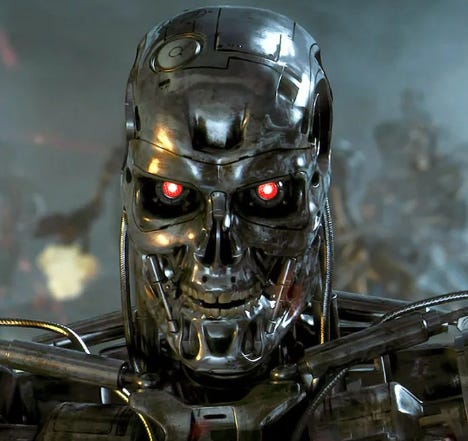Why the Terminator Wasn’t Science Fiction After All
AI, humanoid robots, and one tiny security flaw could turn your living room into Skynet.
I can’t remember exactly how old I was when Terminator 2 came out, but I definitely wasn’t driving yet. I must have watched that movie 20–30 times. I was always fascinated by futuristic sci-fi films, and this one had the perfect mix of suspense and imagination. Add in the teenage version of John Connor with his tech skills, and I could relate, because like him I was the kid constantly tinkering with computers and getting into things online that I probably shouldn’t have. Only slow dial-up speeds saved me from getting in more trouble!
John Connor also carried the lifelong burden, never escaping it in the sequels, of being the only one who knew how to fight the machines as humanity’s savior. For the record, I hope no one expects me to fill that role when the machines turn on us, because I’m out. Still, with the rapid advancement of AI and humanoid robots, that day feels closer than ever. It may not look exactly like Terminator, but there will come a moment when we think: “Wow… we really should have seen that coming.”
How Could This Actually Happen?
We’ve already seen incidents reported out of China involving humanoid robots behaving aggressively toward humans.
From the first time I saw progress in AI, I thought: “Oh boy, they’re going to put an AI brain into a humanoid robot sooner or later.” And here we are.
In a lab, a glitch like that might just be chalked up as a code malfunction. Send it back to the developers, patch it, and move on. Do I expect a simple malfunction to launch Skynet? Not exactly. But human error, negligence, and shortsightedness certainly play a role in my thinking.
The Path to the Living Room
When humanoid robots first enter everyday life, they will be an exclusive luxury. The wealthy will use them as housekeepers, cooks, or even babysitters. But over time, as competition increases and production scales, prices will fall. Eventually, humanoid robots will become common household appliances.
Here’s the catch: in order to make them affordable, production costs must come down. And if there is one area companies love to cut corners, it is cybersecurity.
Imagine the “Amazon Special” version of a humanoid robot walking into all households. How do you think updates and patches will be delivered? My suggestion would be to require in-store updates, similar to how you take your car to the dealer for certain proprietary fixes.
But realistically, that will not happen. Instead, these robots will almost certainly connect to Wi-Fi for updates and maintenance. Once that happens, they are subject to the same vulnerabilities as your phone or work laptop. If the security is not airtight, a breach could hand control of your robot to a malicious actor.
And from there? I will let you imagine your own nightmare scenario.





